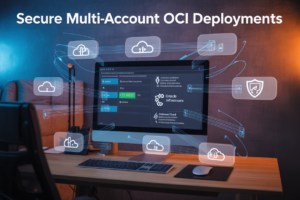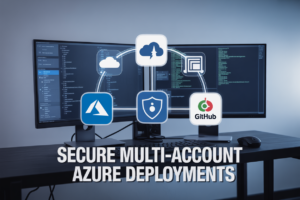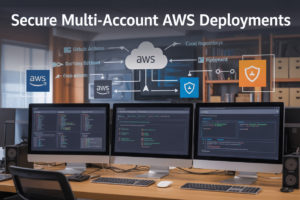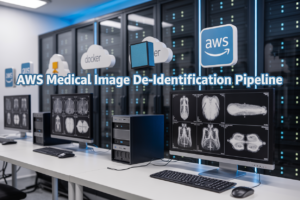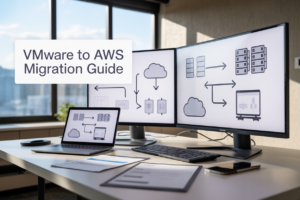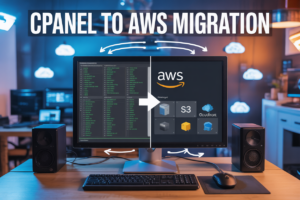Amazon QuickSight RDS integration transforms how businesses turn raw database information into actionable insights. Instead of wrestling with complex data exports or building custom reporting tools from scratch, you can connect your existing relational databases directly to QuickSight’s powerful visualization engine.
This guide is designed for data analysts, business intelligence professionals, and IT teams who want to create compelling dashboards without the typical headaches of traditional database reporting. If you’re tired of static reports and want to give stakeholders real-time access to your RDS data through interactive visualizations, you’re in the right place.
We’ll walk through the essential steps of AWS QuickSight RDS connection setup, showing you exactly how to link your databases and configure secure access. You’ll also discover proven RDS data visualization best practices that help you optimize query performance and build dashboards that actually load quickly. Finally, we’ll cover advanced QuickSight enterprise dashboards features that take your reporting from basic charts to sophisticated analytics tools your entire organization can rely on.
Understanding Amazon QuickSight and RDS Integration Benefits
Seamless data connectivity without complex ETL processes
Amazon QuickSight RDS integration eliminates the traditional headaches of moving data between systems. You can directly connect to your MySQL, PostgreSQL, or SQL Server databases without building complicated data pipelines. This direct connection means your analysts spend time creating insights instead of wrestling with data transformation scripts. The native AWS QuickSight RDS connection handles the heavy lifting automatically, letting you query relational databases with simple SQL statements that update your visualizations instantly.
Real-time dashboard updates from live database connections
Your dashboards stay fresh with live connections to RDS instances, showing the latest data as it changes in your database. Unlike static reports that become outdated within hours, QuickSight pulls current information directly from your relational database every time users access their dashboards. This real-time capability transforms how teams make decisions, giving them access to up-to-the-minute metrics without waiting for overnight batch processes or manual data refreshes.
Cost-effective alternative to traditional BI solutions
Database dashboard creation QuickSight offers significant savings compared to enterprise BI platforms that require expensive licenses per user. The pay-per-session pricing model means you only pay when people actually use the dashboards, not for dormant user accounts. Small teams can start with just a few dollars per month, while larger organizations benefit from volume discounts. The managed service approach also cuts infrastructure costs since AWS handles all the backend maintenance and scaling automatically.
Enhanced data security with AWS native integration
AWS QuickSight enterprise dashboards leverage built-in security features that work seamlessly with your existing RDS setup. VPC connections keep your data traffic private within the AWS network, while IAM roles control exactly who can access which data sources. Encryption protects data both in transit and at rest, meeting compliance requirements without additional configuration. Row-level security ensures users only see data they’re authorized to view, making it safe to share dashboards across different departments and access levels.
Setting Up Your RDS Connection in QuickSight
Configuring database permissions and security groups
Before establishing your Amazon QuickSight RDS connection, you need to configure proper database permissions and network access. Start by creating a dedicated database user for QuickSight with read-only permissions to prevent accidental data modifications. Grant SELECT privileges on the specific tables and views your dashboards will use. Configure your RDS security groups to allow inbound connections from QuickSight’s IP ranges – AWS provides specific IP addresses for each region that you must whitelist. Enable SSL encryption for secure data transmission between QuickSight and your RDS instance. For enhanced security, consider using AWS PrivateLink or VPC endpoints to keep traffic within the AWS network. Set up proper IAM roles that allow QuickSight to assume the necessary permissions for database access while following the principle of least privilege.
Creating your first RDS data source connection
Navigate to the QuickSight console and select “Manage data” from the main menu, then choose “New data set” to begin the connection process. Select your RDS engine type – whether it’s MySQL, PostgreSQL, SQL Server, or Amazon Aurora. Enter your RDS endpoint hostname, which you can find in the RDS console under your database instance details. Specify the port number (typically 3306 for MySQL, 5432 for PostgreSQL), database name, and the credentials for your QuickSight-specific database user. Choose between importing data directly into QuickSight’s SPICE engine for faster performance or using direct query mode for real-time data access. Test the connection to verify all parameters are correct before proceeding. Name your data source with a descriptive identifier that your team will recognize, and optionally add tags for better organization across multiple connections.
Testing connectivity and troubleshooting common issues
After configuring your RDS data source connection, QuickSight provides a built-in connection test feature that validates network connectivity and authentication credentials. Common connectivity issues include incorrect security group configurations, wrong database credentials, or network timeouts due to high latency. Check your RDS instance’s publicly accessible setting if connecting from QuickSight’s managed service. Verify that your database user has the correct permissions by testing queries directly in your database client. If connection attempts fail, review CloudTrail logs for detailed error messages that can pinpoint authentication or authorization problems. Network connectivity issues often stem from VPC routing problems or missing NAT gateway configurations. For performance testing, run sample queries on your largest tables to identify potential bottlenecks before building dashboards. Monitor connection metrics in CloudWatch to establish baseline performance and set up alerts for connection failures or slow response times.
Optimizing Query Performance for Better Visualization Speed
Implementing efficient SQL queries for dashboard responsiveness
Writing smart SQL queries makes your Amazon QuickSight RDS integration lightning fast. Focus on selecting only the columns you need rather than using SELECT *, and add WHERE clauses to filter data early in the query process. Index your most commonly queried columns in RDS, and avoid complex JOIN operations when possible. When building calculated fields in QuickSight, push computations to the database level using SQL expressions rather than letting QuickSight handle them client-side. This approach dramatically improves QuickSight SQL query optimization and keeps your dashboards snappy even with large datasets.
Using RDS read replicas to reduce production database load
RDS read replicas are your secret weapon for maintaining database performance while powering data visualization. Set up dedicated read replicas specifically for QuickSight connections, keeping your production database free from analytical query overhead. Configure QuickSight to connect to these replicas instead of your primary RDS instance, ensuring that heavy dashboard queries don’t impact your application’s performance. Read replicas automatically sync with your primary database, giving you fresh data without the performance hit. This setup becomes especially valuable when multiple users access dashboards simultaneously, as the analytical workload gets distributed across your replica infrastructure.
Managing connection limits and concurrent user access
Database connections can become a bottleneck when multiple users hit your dashboards at once. RDS instances have built-in connection limits that vary by instance size, and exceeding these limits causes timeout errors in your visualizations. Monitor your connection usage through CloudWatch metrics and scale your RDS instance vertically if you consistently approach these limits. QuickSight manages connection pooling automatically, but you can optimize this by setting appropriate refresh schedules for your datasets. Stagger dashboard refresh times across different datasets to prevent connection spikes, and consider implementing user access controls to manage peak usage periods effectively.
Caching strategies to minimize database query frequency
Smart caching turns slow dashboards into lightning-fast experiences. QuickSight automatically caches query results for up to one hour by default, but you can customize this based on your data freshness requirements. Set up SPICE (Super-fast, Parallel, In-memory Calculation Engine) for frequently accessed datasets that don’t change often – this keeps data in memory and eliminates database hits entirely. Schedule incremental data refreshes during off-peak hours to keep SPICE datasets current without impacting performance. For real-time dashboards, balance refresh frequency with system load by implementing smart refresh triggers based on actual data changes rather than time-based schedules.
Building Powerful Dashboards from Relational Data
Creating interactive charts from normalized database tables
Amazon QuickSight RDS integration excels at transforming normalized relational data into compelling visual stories. Start by connecting your related tables through proper joins – customers, orders, and products tables naturally flow together to create comprehensive sales analytics. QuickSight’s drag-and-drop interface makes building charts from complex database schemas surprisingly straightforward. You can create everything from simple bar charts showing monthly revenue to sophisticated scatter plots revealing customer behavior patterns across multiple dimensions.
Implementing drill-down capabilities across related data sets
Drill-down functionality transforms static reports into interactive exploration tools. Configure hierarchical relationships between your RDS tables to enable seamless navigation from high-level summaries to granular details. Start with regional sales performance, then drill into specific stores, individual products, and finally transaction-level data. QuickSight automatically maintains context across related data sets, ensuring users can explore deeper insights without losing their analytical thread. Set up calculated fields that dynamically adjust based on the drill-down level for contextually relevant metrics.
Designing executive-level KPI dashboards
Executive dashboards demand crystal-clear metrics that tell the business story at a glance. Focus on key performance indicators that directly impact strategic decisions – revenue growth, customer acquisition costs, market share trends, and operational efficiency metrics. Design clean, uncluttered layouts using QuickSight’s executive-friendly visualizations like KPI tiles, gauge charts, and trend indicators. Implement conditional formatting to highlight performance against targets using color-coded alerts. Your RDS data becomes the foundation for real-time business intelligence that executives can trust for critical decision-making.
Building operational dashboards for real-time monitoring
Operational teams need dashboards that pulse with live data from your RDS systems. Configure QuickSight to refresh frequently from your transactional databases, showing current inventory levels, system performance metrics, and operational bottlenecks as they happen. Build alert mechanisms using conditional formatting and threshold-based notifications. Create role-based views so different operational teams see relevant metrics – warehouse staff monitor inventory turnover while customer service tracks support ticket volumes. Your relational data visualization becomes a command center for day-to-day operations.
Advanced Features for Enterprise Data Visualization
Row-level security implementation for multi-tenant databases
Amazon QuickSight enterprise dashboards support sophisticated row-level security (RLS) that dynamically filters data based on user permissions. Configure RLS rules using QuickSight’s dataset security settings to ensure each tenant only sees their own data when connecting to multi-tenant RDS databases. The system automatically applies SQL WHERE clauses during query execution, maintaining data isolation without requiring separate database instances for each customer organization.
Scheduled refresh automation for batch data updates
QuickSight RDS integration includes automated refresh scheduling that keeps your dashboards current with minimal manual intervention. Set up SPICE datasets to refresh hourly, daily, or weekly based on your data update patterns. The refresh process optimizes memory usage and query performance by pre-aggregating frequently accessed metrics. Monitor refresh status through CloudWatch metrics and configure SNS notifications for failed refresh attempts to maintain data accuracy across your relational data analytics QuickSight implementation.
Custom calculations and business logic integration
Build complex business logic directly within QuickSight using calculated fields that reference multiple RDS tables and apply custom formulas. Create calculated measures for KPIs like customer lifetime value, year-over-year growth rates, and rolling averages without modifying your underlying database schema. QuickSight’s expression engine supports advanced functions including conditional logic, date arithmetic, and string manipulation, enabling powerful AWS data visualization tools that transform raw relational data into meaningful business insights through dynamic calculations.
Best Practices for Production Deployment
Monitoring Dashboard Performance and User Adoption Metrics
Tracking your Amazon QuickSight RDS integration performance requires establishing key metrics like query response times, dashboard load speeds, and user engagement patterns. Set up CloudWatch alarms to monitor SPICE refresh rates and RDS connection health. Create automated reports showing which dashboards get the most traffic and identify underperforming visualizations that might need optimization.
Implementing Disaster Recovery and Backup Strategies for Dashboards
Protect your QuickSight enterprise dashboards by exporting dashboard definitions and data source configurations regularly. Store backup copies of critical visualizations in version control systems and maintain documentation of your RDS data visualization best practices. Set up cross-region replication for your underlying RDS instances to ensure business continuity during outages.
Managing User Permissions and Role-Based Access Control
Design granular permission structures that align with your organization’s data governance policies. Create user groups based on departments or data access levels, then assign appropriate dashboard viewing and editing rights. Use QuickSight’s row-level security features to ensure users only see data relevant to their roles while maintaining seamless access to RDS-powered visualizations.
Scaling Your Visualization Infrastructure for Growing Data Volumes
Plan for data growth by implementing SPICE capacity monitoring and automated scaling policies for your AWS data visualization tools. Optimize your RDS instances with read replicas to handle increased query loads from expanding dashboard usage. Consider partitioning large datasets and implementing incremental refresh strategies to maintain fast performance as your relational data analytics QuickSight deployment grows.
Connecting Amazon QuickSight with your RDS database opens up a world of possibilities for data visualization that goes way beyond basic reporting. You get real-time insights, lightning-fast queries, and the ability to create dashboards that actually help your team make better decisions. The integration handles the heavy lifting while you focus on turning raw data into stories that matter.
Ready to transform how your organization looks at data? Start small with a single RDS connection, build one meaningful dashboard, and watch how quickly your team adopts this new way of working with information. The combination of QuickSight’s user-friendly interface and RDS’s reliable data storage creates a foundation that scales with your business needs and keeps everyone on the same page.














